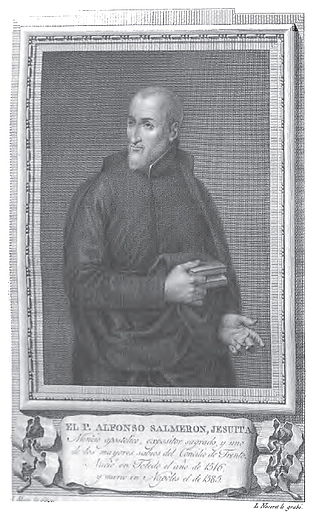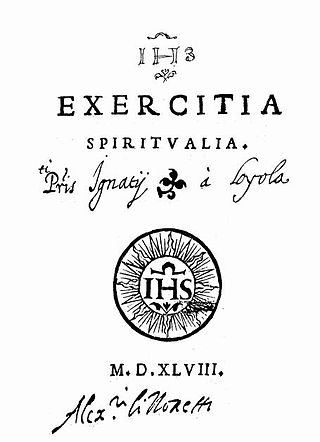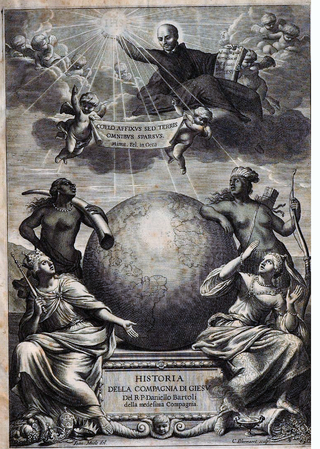Today
Up to 2005 some 157 volumes have been published. The work goes on, and is supplemented by other topical studies published in the Bibliotheca instituti historici Societatis Iesu (54 volumes).
The Monumenta Historica Societatis Iesu (MHSI) is a collection of scholarly volumes (157 to this day) on critically edited documents on the origin and early years of the Society of Jesus, including the life and writings of St Ignatius of Loyola.
Prompted by General Congregation XXIV of 1892, which recommended to the Superior General that writing the Society of Jesus’ history be resumed, the newly elected Luis Martin embarked on a vast project of having first published critical editions of documents on the origins of the Society available in the archives of the Order. A team of experts was appointed and a first volume of the MHSI was published in Madrid in 1894. When the Jesuit Historical Institute was established in Rome (1930) the work was carried on from there. It could be said that this was also stimulated by the renewal of historical research methods that characterised the end of the 19th century.
Monumenta paedagogica Societatis Iesu: 1540-1616 (Ratio Studiorum and its preparatory documents): 7 volumes.
Up to 2005 some 157 volumes have been published. The work goes on, and is supplemented by other topical studies published in the Bibliotheca instituti historici Societatis Iesu (54 volumes).

The Society of Jesus, also known as the Jesuit Order or the Jesuits, is a religious order of clerics regular of pontifical right for men in the Catholic Church headquartered in Rome. It was founded in 1540 by Ignatius of Loyola and six companions, with the approval of Pope Paul III. The society is engaged in evangelization and apostolic ministry in 112 nations. Jesuits work in education, research, and cultural pursuits. Jesuits also conduct retreats, minister in hospitals and parishes, sponsor direct social and humanitarian ministries, and promote ecumenical dialogue.

Georg Fabricius was a Protestant German poet, historian and archaeologist who wrote in Latin during the German Renaissance.

The Monumenta Germaniae Historica, frequently abbreviated MGH, is a comprehensive series of carefully edited and published primary sources, both chronicle and archival, for the study of parts of Northwestern, Central and Southern European history from the end of the Roman Empire to 1500.

Alfonso Nicolás (Alphonsus) Salmerón, SJ was a Spanish biblical scholar, a Catholic priest, and one of the first Jesuits.

Regimini militantis Ecclesiae was the papal bull promulgated by Pope Paul III on September 27, 1540, which gave a first approval to the Society of Jesus, also known as the Jesuits, but limited the number of its members to sixty.

Francis Borgia was a Spanish Jesuit priest. The great-grandson of both Pope Alexander VI and King Ferdinand II of Aragon, he was Duke of Gandía and a grandee of Spain. After the death of his wife, Borgia renounced his titles and became a priest in the Society of Jesus, later serving as its third superior general. He was canonized on 20 June 1670 by Pope Clement X.

Diego Laynez, S.J., born in 1512 and died on 19 January 1565 (Rome), was a Spanish Jesuit priest and theologian, a New Christian, and the second Superior General of the Society of Jesus after the founder Ignatius of Loyola.

Luis Martín García was a Spanish Jesuit, elected the twenty-fourth Superior General of the Society of Jesus.

The Spiritual Exercises, composed 1522–1524, are a set of Christian meditations, contemplations, and prayers written by Ignatius of Loyola, a 16th-century Spanish Catholic priest, theologian, and founder of the Society of Jesus (Jesuits).

The Ratio atque Institutio Studiorum Societatis Iesu, often abbreviated as Ratio Studiorum, was a document that standardized the globally influential system of Jesuit education in 1599.

Antonio Possevino was a Jesuit protagonist of Counter Reformation as a papal diplomat and a Jesuit controversialist, polemicist, encyclopedist, and bibliographer. He was the first Jesuit to visit Muscovy, Sweden, Denmark, Livonia, Hungary, Pomerania, and Saxony in amply documented papal missions between 1578 and 1586 where he championed the enterprising policies of Pope Gregory XIII.
Exposcit Debitum is the title of the Papal bull that gave a second and final approval to the foundation of the Society of Jesus. It was issued by Pope Julius III on 21 July 1550. It replaced Regimini militantis Ecclesiae of 1540. The structure of the text is the same but, based on 10 years experience, some modifications were introduced:
MHSI may stand for:
The Jesuit Historical Institute, also known as IHSI, is an international group of Jesuit historians committed since the end of the 19th century to bring out scientifically critical editions of the foundational texts of the Society of Jesus, and to promote research on the history of the Jesuits. Originally based in Madrid, the institute is now quartered in Rome.
Galeote Pereira was a 16th-century Portuguese soldier of fortune. He spent several years in China's Fujian and Guangxi province after being captured by the Chinese authorities in an anti-smuggling operation. The report he wrote after escaping China is one of the earliest known accounts by a westerner of life in Ming China; indeed, it is the first detailed observation of that civilisation by a lay (non-clerical) European visitor since that of Marco Polo.

Ignatius of Loyola, venerated as Saint Ignatius of Loyola, was a Basque Spaniard Catholic priest and theologian, who, with six companions, founded the religious order of the Society of Jesus (Jesuits), and became its first Superior General, in Paris in 1541.

Istoria della Compagnia di Gesu is a monumental six folio-volume work about history of the Society of Jesus published in Rome in 1650–1673 by the Jesuit historian Daniello Bartoli. It is the most extensive classic of Italian literature, over ten thousand pages long. It begins the centenary history of the Jesuits between 1540 and 1640 with an authoritative if somewhat ponderous biography of the founder Ignatius Loyola.

Lampacau or Lampacao, also known by other names, was a small island in the Pearl River Delta, which in the mid-16th century played an important role in Sino-Portuguese trade. Lampacau no longer exists as a separate island, as sedimentary deposits from the Pearl River system resulted in it becoming a part of a larger island.

Enrique García Hernán is a Spanish historian of the culture of early modern Europe. His research examines the interaction of religious sentiment, political thought and international relations in the sixteenth, seventeenth and eighteenth centuries. It attempts to bridge the gap between the study of forms of cultural and intellectual expression and the realities of political, diplomatic and military organization. He is a Corresponding Fellow of the Royal Academy of History, member of the Board of Directors (Vocal) of the Spanish Commission for Military History, and Fellow (Académico) of the Ambrosiana Academy of Milan. His current academic affiliation is as a research professor in the Institute of History, within the Center for Humanities and Social Sciences at the Spanish National Research Council. The Spanish National Research Council is the largest public institution dedicated to research in Spain and the third largest in Europe.
Juan Alfonso de Polanco, SJ was a Spanish Jesuit priest. From 1547 to 1556, he was the secretary of Ignatius of Loyola and one of his closest advisers. Later, he was the secretary of the first two superiors general of the Society of Jesus after Loyola, Diego Laynez, and Francis Borgia. He also chronicled the early history of the Jesuits.